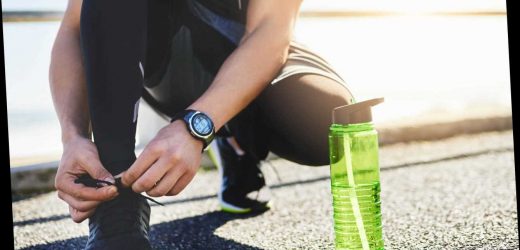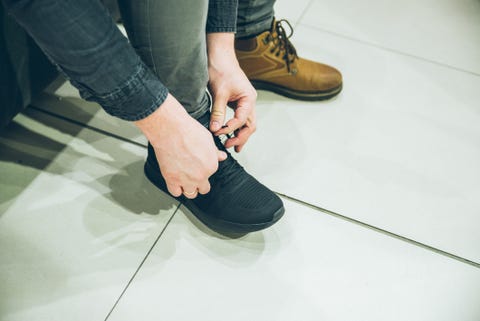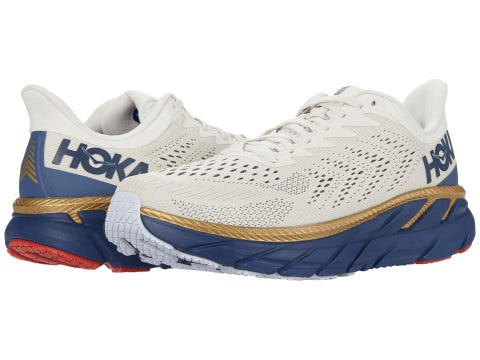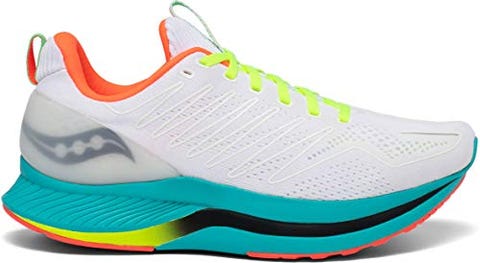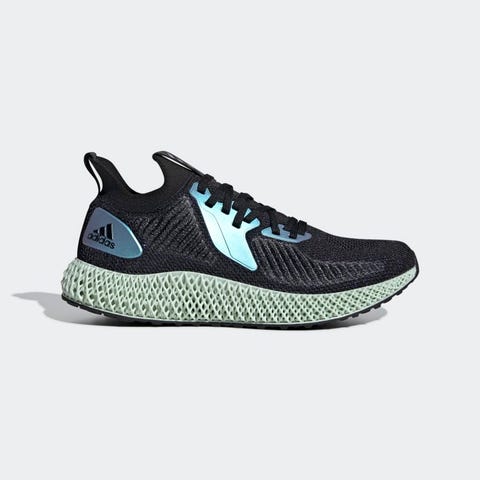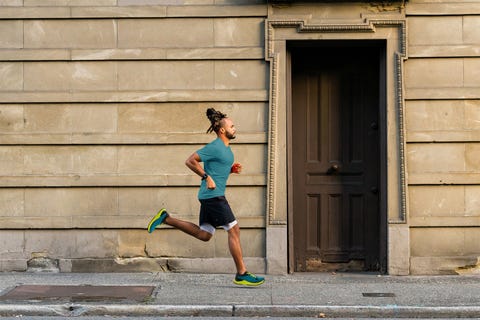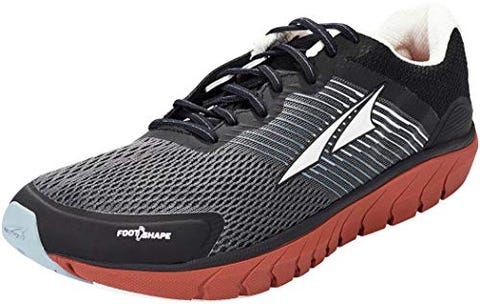If you’re a runner, then you know that your shoes are everything when it comes to your training. Not only do they help you stay comfortable as you log miles, but they help keep your form and feet stable as you train.
But not everyone has a perfect biomechanical stride. Pronation, or how much your foot rolls inward with each step, can affect your runs.
“Every bipedal human pronates through their foot—it’s an important piece of the gait cycle! We pronate during midstance, load our arch, and use that passive energy to help propel us forward,” explains says Blake Dircksen PT, DPT, CSCS, Doctor of Physical Therapy at Bespoke Treatments. “Pronation is one thing that can continue to stress that medial arch of the plantar, and in this case a motion control (pronation control) shoe may be helpful in mitigating that stress.”
The solution? A shoe that helps to balance you out, a.k.a. a stability shoe.
“Generally, a shoe for overpronation is called a motion controlled shoe. These motion controlled shoes often use a more rigid foam, reducing the amount of flexibility and is meant to control the pronation of the foot,” says Dircksen.
Picking The Right Stability Shoe For You
If you’re looking to try out a shoe to combat your overpronation, Dircksen has a few tips.
Tip 1: Pick the shoe that is the most comfortable.
“This is hands down the golden rule for picking a shoe. Even if you’ve been told you need a motion control shoe—if the motion control shoe doesn’t feel right, then go with the other one that was more comfortable,” says Dircksen. “Your feet are sensitive! Picking the right shoe is important. Try them on, walk around, do some jumping jacks, hop on the treadmill—take those bad boys for a spin.”
Tip 2: Find out where the ‘break’ is.
“You’ll want the shoe to ‘break’ at the metatarsophalangeal joint—right where the toes meet the balls of the feet,” says Dircksen. “Do this by pushing together the front of the shoe with the back of the shoe and see where the shoe ‘breaks’.”
Tip 3: Talk with a physical therapist and your local run store.
“A PT and running store rep that understands their shoes will be able to dive into your past history of injury and point you in the direction of best fit by evaluating the various factors that make up a shoe and how each factor puts load into the body (stack height, heel:toe drop, shoe width, foam density, etc.),” says Dircksen. “That said—comfort is still king.”
Tip 4: Look for defects.
“Sometimes shoes have manufacturing defects. Higher stack heights, different cuts of the upper, slanted soles, so on. Put the shoes side by side and compare to make sure there are no glaring defects,” says Dircksen
Tip 5: Rotate your shoes.
“This is a big one. Have a few different kinds of shoes on hand and rotate through them throughout the week—some with higher heel-toe drops, some with bigger stack heights, some with cushy foams, and so on,” says Dircksen. “This variety of shoe types will change the way that you load your body and will reduce the risk of overloading one area of your body too often – often the main culprit behind overuse injuries!”
Tip 6: Choose the shoe that corresponds best to your style of training.
“We’re all training for different things, whether it’s a road race of a specific distance, general health and wellness, or to supplement another athletic pursuit. There is a ton of variety in running shoes, and depending on your primary use of the shoe, you may value certain aspects of one running shoe over another,” says Steve Crnic, manager of Brooklyn Running Company. “Aspects like stack height (literal amount of cushion in the shoe), flexibility of the sole, and heel-to-toe drop can be big factors to consider when selecting a shoe for your lifestyle.”
The Best Stability Shoes for Overpronators
Here are 10 pairs of running shoes that are great options for overpronation.
The Hoka Clifton 7
The On Cloud X
Saucony Men’s Endorphin Shift
The Endorphin Shift shoe features tons of support thanks to Saucony’s new ultralight PeBax®-based PWRRUN PB cushioning that helps transfer energy from the shoe’s nylon plate into propelling your stride. It also has a medial rubber wrap to provide lightweight structural support with Saucony’s Speedroll technology that creates a “rolling” feel under your foot for continuous momentum.
Mizuno Wave Inspire 16
The Wave Inspire 16 delivers a super stable ride thanks to its impact-absorbing midsole SmoothRide Support Wave technology. It also has two layers of shock-absorbing U4ic (“euphoric”) foam at the top and bottom layers of the shoe for a ligher-impact stride.
Brooks Adrenaline GTS 21
The Adrenaline GTS 21 has GuideRails that act like flexible bumpers along its medial side to help stabilize your foot and protect your knees from impact. And they also have Brooks’ DNA LOFT Crash Pad cushions for super soft landings.
New Balance Men’s Fresh Foam 860v11
This shoe was designed for runners that need extra stability. It has New Balance’s iconic Fresh Foam that offers serious support that is also extremely light-weight and extra medial post support. It also has Ultra Heel technology that gives you non-slip security and additional Achilles support.
Nike Air Zoom Structure 23
Nike itself suggests these shoes as a great option for overpronators. The Air Zoom Structure 23 provides a firm foam midsole on the arch side of the foot for plush comfort as your foot hits the ground. And it also has extra cushioning for heel-to-toe transitions thanks to a crash pad placement at the heel.
Adidas AlphaEDGE 4D
The AlphaEDGE 4D features a 3D-printed liquid resin midsole in a lattice pattern that is highly elastic and tear-resistant that acts as a super-springy cushion as you run. It also has a Continental Rubber outsole for added traction in both wet and dry conditions to keep your foot stable.
Topo Ultrafly 3
The Ultrafly 3 features rear-foot stability and light pronation resistance thanks to its TPU heel counter and EVA medial post. They’re also cushioned with Topo’s 2-density ZipFoam midsole and a molded foam collar and Ortholite footbed offer extra comfort.
ALTRA AL0A4PEA Provision 4
The Provision 4 is Altra’s most updated model that features its super supportive arch feature called InnovArch that “uses proprioception to establish a connection between mind, body and feet which encourages a natural foot placement in each step”. The shoe also has GuideRail to keep your foot stable, and a FootShape toebox that allows your toes to the room they need to spread out naturally.
Source: Read Full Article
